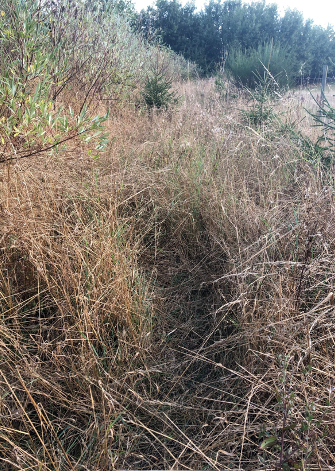By Lisa Hultberg
There is this photograph that I love and since I saw it for the first time it has kept on coming back to my mind from time to time. It’s untitled, taken by the American photographer Francesca Woodman in 1980. It displays a young woman among birch trees, stretching her arms up towards the sky. Her arms following the same direction as the tree stems behind her. She’s got birch-bark covering her forearms and her head is turned down. Her face is not visible to the beholder.
When I look at the picture from a place where I am at now, I strikes me that her posture is expressing a wish. Despite the frozen moment, her body language seems to burst with energy. She appears so determined to become something else, one of those birch trees. She is making an active attempt to blend in and hide herself. Her turned away face suggests that she doesn’t want to be the centre of attention.
Contemplating the picture, it opens a window to me. It proposes the thought that individuality might be escaped for a while and that there can be beauty to that. The action of the woman in the picture presents itself as something so humble that it might as well be radical; the wish to erase her subjectiveness and not only be non-human, but just a tree among many other trees.
We live in a world that constantly advocates individuality, self-respect, boundaries, independence, strong will and determination. We are so centered around being our own entities. It is like we are constantly wired for visibility, striving to present ourselves and to be seen. What would it mean to search the opposite? To not manifest, to not stand on our own but simply to let ourselves dissolve now and then. To give up on separating us from that what surrounds us. Imagine not being known, not being important but being insignificant. It is a thought that scares me but also frees me. There might be another road to pure belonging, where giving up on my me is what makes me a part.

Picture: My hiding place in the tall dry grass.
When I challenge my mind-focused experience and approach nature and my surroundings in a physical way, I practice dissolving, and then I can get a glimpse of what belonging really feels like. A lingering experience is when I went to lay down in the tall dry grass from last year. It was an act of disappearing, feeling hidden from the world yet so close to it physically. I allowed myself to be supported by the ground, could almost hear it humming. Resting my eyes; letting them shift between the clouds and then the blue color of the sky. I felt so safe, my fingers weaving the straws. My body sinking deeper down with every breath.
I have sensed her, that young woman in the picture, as I stretched my arms, wrapped my hands around the stem of two young beech trees. The wind rocked the thin stems back and forth and made the leaves rustle. The movement in the trees made my body follow. I closed my eyes and I didn’t want to let go. There was something deep down in me that felt at rest; the moment sheltered my mind.
I believe that whatever we do with our bodies, shapes us in ways we do not know. But I also believe that intentional movement can be transformative.
I believe in being tender, gentle and humble to our surroundings. To approach nature as if it has something to teach us, beyond our own words and perceptions. To really listen, to listen with our whole being. It is a radical action in its insignificance.
I believe that I can practice belonging and that belonging is within my reach. It begins and ends within my body.
Keywords
Embodiment, Francesca Woodman, collectiveness, subjectiveness, visibility
About the Author
Lisa Hultberg is a culture worker and landscape architect with her own artistic practice, mainly focusing on sculptural work in ceramics and textile. She has an interest in interdisciplinary work; exploring questions in the borders between art, architecture, design and philosophy. Recurrent characteristics in her work are the human subjective experience, site specificity, temporarity and the view of places as transformative processes. She has a masters degree in landscape architecture from SLU Alnarp and a degree in ceramic craft from Capellagården. Currently she works as a coordinator at ÖSKG (Östra Skånes Konsnärgrupp)(Östra Skånes Konstnärsgrupp Tjörnedala Art Gallery in Baskemölla, Simrishamn. She is based in Malmö where she has her home and studio.

